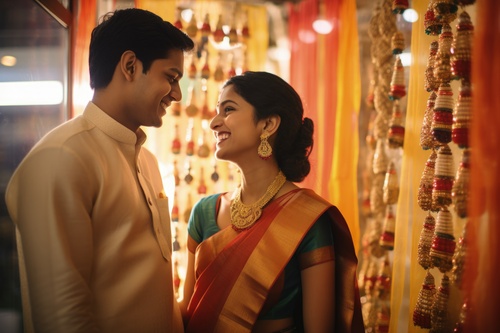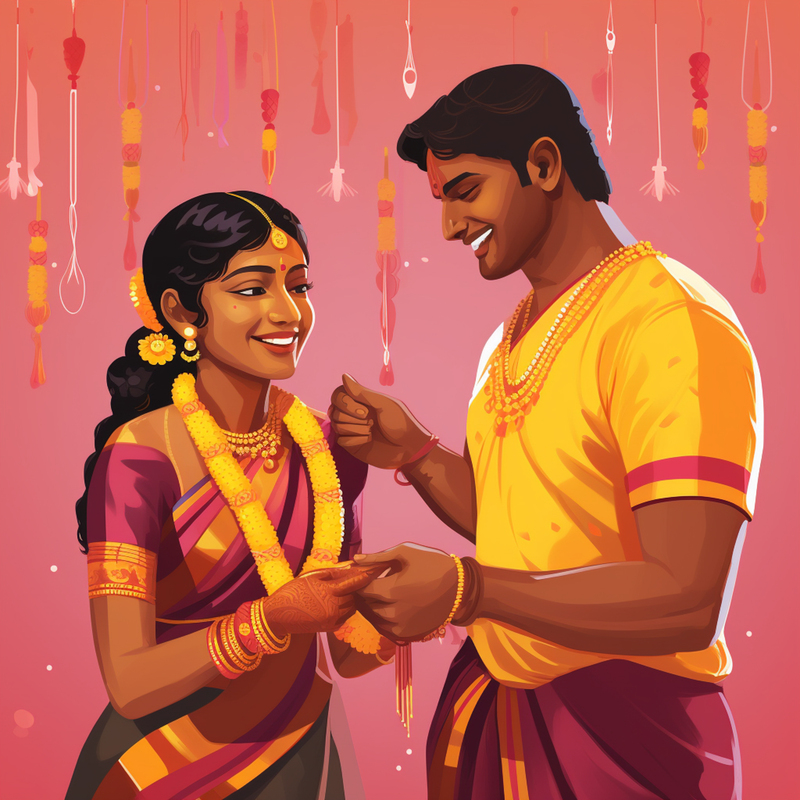
Introduction of Hindu Marriage Act
In the diverse mosaic of Indian society, marriage isn’t merely a legal contract but a sacred union entrenched in centuries-old traditions and cultural ethos. At the intersection of law and culture stands the Hindu Marriage Act, a cornerstone legislation that encapsulates the essence of matrimonial sanctity within the Hindu community. Embarking on a journey through its legal intricacies and cultural significance unveils a tapestry woven with threads of tradition, modernity, and societal evolution. In this exploration, we unravel the multifaceted layers of the Hindu Marriage Act, delving into its historical underpinnings, key provisions, cultural implications, and the evolving landscape of matrimonial jurisprudence. Join us as we embark on a captivating odyssey, navigating through the labyrinth of legalities and cultural nuances that define the essence of Hindu marriages under the ambit of this seminal legislation.
Key Provisions and Implications:
The Hindu Marriage Act, enacted in 1955, serves as a comprehensive guidebook governing the solemnization and dissolution of Hindu marriages in India. At its core lie several key provisions that not only define the legality of marriage but also delineate the rights and responsibilities of spouses.
Conditions for a Valid Marriage: The Act stipulates certain conditions for a marriage to be legally recognized, including the parties being Hindu, not already married, of legal age (21 years for groom, 18 years for bride), and not within the prohibited degrees of relationship.
Solemnization of Marriage: It lays down the essential rituals and ceremonies required for the valid solemnization of a Hindu marriage, emphasizing the importance of consent and traditional customs.
Registration of Marriage: While not mandatory, the Act encourages the registration of marriages to establish legal validity and facilitate proof of marriage for various legal and administrative purposes.
Rights and Duties of Spouses: The Act elucidates the rights and obligations of spouses within the marital bond, encompassing issues such as maintenance, inheritance, and custody of children.
Divorce and Dissolution: A significant departure from traditional Hindu law, the Act introduced provisions for divorce on grounds such as adultery, cruelty, desertion, and conversion to another religion, thereby providing an avenue for couples to seek legal separation in certain circumstances.
Remarriage: In the event of dissolution of marriage, the Act allows for remarriage, acknowledging the right of individuals to seek companionship and marital bliss afresh.
Implications:
- Legal Clarity and Certainty: The Act provides a clear and uniform legal framework for Hindu marriages, reducing ambiguity and fostering legal certainty in matrimonial matters.
- Protection of Rights: By delineating the rights and duties of spouses, the Act safeguards the interests of both parties, ensuring equitable treatment and recourse in case of disputes.
- Social Transformation: The introduction of divorce provisions reflects a progressive shift towards gender equality and individual autonomy, challenging traditional notions of marital permanence and the stigma associated with divorce.
- Cultural Continuity: While embracing modern legal principles, the Act maintains a delicate balance with Hindu customs and traditions, preserving the cultural sanctity of marriage within the community.
Navigating Through Legal Labyrinths:
As with any legal framework, the implementation and interpretation of the Hindu Marriage Act often entail navigating through intricate legal labyrinths, where tradition intersects with modern legal principles. This journey is marked by various challenges and complexities, reflecting the dynamic nature of Indian society and the evolving dynamics of matrimonial law.
Interpretation Discrepancies: One of the primary challenges in applying the Hindu Marriage Act lies in reconciling divergent interpretations of its provisions. Given the rich diversity of customs and practices within the Hindu community, courts often encounter situations where traditional rituals and legal requirements may seemingly conflict. Judicial precedents and legal expertise play a pivotal role in harmonizing these interpretations to ensure equitable outcomes.
Jurisdictional Conflicts: Another aspect complicating the legal landscape is the issue of jurisdictional conflicts, particularly in cases involving inter-state or international marriages. Determining the appropriate forum for adjudicating matrimonial disputes requires careful consideration of jurisdictional principles, conflict of laws, and procedural intricacies. Resolving such conflicts necessitates a nuanced understanding of both domestic legislation and international conventions.
Socio-Cultural Complexities: The Hindu Marriage Act operates within the broader socio-cultural milieu of India, where societal norms, customs, and practices exert a significant influence on matrimonial matters. Balancing legal principles with societal expectations poses a formidable challenge, especially concerning issues such as dowry, caste, and gender roles. Courts often grapple with addressing deep-rooted socio-cultural biases while upholding the principles of justice and equality enshrined in the Act.
Evolutionary Trajectory: Despite these challenges, the Hindu Marriage Act has traversed an evolutionary trajectory, continually adapting to meet the evolving needs of society. Amendments and judicial pronouncements have addressed emerging issues, such as gender equality, domestic violence, and marital rights, thereby enriching the legal landscape and enhancing access to justice.

Embracing Change:
In the tapestry of India’s legal framework, the Hindu Marriage Act stands as a testament to the nation’s ability to evolve with the tides of time while preserving its cultural heritage. At its core, the Act is not merely a static set of regulations but a living document that reflects the changing ethos of Indian society.
Adaptability to Modern Values: Over the decades since its inception in 1955, the Hindu Marriage Act has undergone several amendments to reflect modern values and address emerging social issues. These revisions have been instrumental in ensuring that the Act remains relevant and responsive to the needs of contemporary society. For instance, amendments pertaining to the age of marriage, consent, and grounds for divorce have all contributed to aligning the Act with evolving societal norms.
Challenges to Traditional Norms: Embracing change within the context of the Hindu Marriage Act has also necessitated challenging traditional norms and practices that may be inconsistent with modern principles of equality and justice. For example, provisions related to dowry, child marriage, and gender roles have been reexamined and redefined to promote gender equality and protect the rights of vulnerable individuals within the institution of marriage.
Balancing Tradition and Progress: Despite its progressive amendments, the Hindu Marriage Act remains rooted in the rich tapestry of Hindu traditions and customs. It strikes a delicate balance between preserving cultural heritage and embracing progressive change, recognizing that tradition and progress are not mutually exclusive but rather complementary facets of a dynamic society.
Promoting Access to Justice: A key aspect of embracing change within the Hindu Marriage Act is ensuring that all individuals have access to justice and legal recourse, regardless of their socio-economic background or gender. Efforts to simplify legal procedures, enhance awareness of legal rights, and expand access to legal aid services have all contributed to making the Act more inclusive and empowering for marginalized communities.
Cultural Significance:
Beyond its legal intricacies, the Hindu Marriage Act reverberates with profound cultural significance, weaving together the timeless traditions, rituals, and values that form the bedrock of Hindu society. Enacted in 1955, this seminal legislation not only regulates the solemnization and dissolution of marriages but also serves as a custodian of India’s rich cultural heritage.
Embodying Sacred Tradition: At its heart, the Hindu Marriage Act encapsulates the sanctity and solemnity of Hindu matrimony, drawing upon centuries-old customs and rituals that have been passed down through generations. From the sacred fire of the Vedic wedding ceremony to the exchange of vows amidst the chanting of hymns, the Act enshrines these timeless traditions, reinforcing the enduring bond between culture and marriage.
Uniting Diverse Communities: Beyond its legal purview, the Act serves as a unifying force, binding together diverse communities under a common cultural ethos. Whether it be the elaborate rituals of a South Indian wedding or the vibrant celebrations of a North Indian marriage procession, the Act embraces the kaleidoscope of regional customs and practices, fostering a sense of cultural unity amidst diversity.
Preserving Cultural Identity: In a rapidly changing world, the Hindu Marriage Act plays a pivotal role in preserving and perpetuating India’s cultural identity. By providing legal recognition to traditional marriage ceremonies and customs, the Act safeguards these age-old traditions from the encroachment of modernity, ensuring their continuity for future generations.
Celebrating Family and Community: Central to the cultural significance of the Hindu Marriage Act is its celebration of the institution of family and community. Marriage is not merely a union between two individuals but a bond encompassing families, communities, and even the divine. The Act acknowledges the integral role of family and community in the marital journey, emphasizing the collective celebration and support that accompany the union of two souls.
Challenges and Future Prospects:
As the societal landscape continues to evolve, the Hindu Marriage Act faces a myriad of challenges and opportunities that shape its trajectory in the years to come. From addressing persistent inequalities to embracing technological advancements, navigating these challenges will be crucial in ensuring the Act’s relevance and effectiveness in the future.
Gender Equality and Empowerment: One of the foremost challenges confronting the Hindu Marriage Act is the imperative of promoting gender equality and empowerment within the institution of marriage. Despite legislative reforms, entrenched patriarchal norms and practices continue to perpetuate inequalities in marital relationships. Future prospects lie in strengthening legal safeguards, enhancing awareness of rights, and fostering a cultural shift towards egalitarian values.
Technology and Legal Innovation: The advent of technology presents both challenges and opportunities for the Hindu Marriage Act. While digital platforms offer greater accessibility and convenience in marriage registration and dispute resolution, they also raise concerns regarding data privacy, cybersecurity, and the digital divide. Embracing technological innovations while safeguarding legal rights will be crucial in harnessing the full potential of digitalization in matrimonial matters.
Interfaith and Inter-caste Marriages: With the blurring of traditional boundaries and the rise of interfaith and inter-caste marriages, the Hindu Marriage Act faces the challenge of accommodating diverse marital practices within its legal framework. Future prospects lie in fostering inclusivity, respecting individual choices, and transcending communal divisions to create a more harmonious and pluralistic society.
Socio-economic Disparities: Socio-economic disparities pose a significant challenge to the equitable implementation of the Hindu Marriage Act. Marginalized communities often face barriers to accessing legal services, enforcing marital rights, and escaping cycles of poverty and exploitation. Future prospects entail strengthening legal aid mechanisms, enhancing socio-economic empowerment, and addressing systemic inequalities to ensure justice for all.
Globalization and Cross-border Marriages: In an era of globalization, cross-border marriages present novel challenges for the Hindu Marriage Act, including jurisdictional conflicts, recognition of foreign marriages, and enforcement of legal rights across international boundaries. Future prospects lie in fostering international cooperation, harmonizing legal standards, and developing mechanisms for cross-border dispute resolution to navigate the complexities of transnational marriages.
Conclusion:
As we conclude our exploration of the Hindu Marriage Act, we are reminded of its profound significance as not just a legal document but a custodian of India’s cultural heritage, a safeguard of individual rights, and a beacon of societal progress. Through its journey spanning decades, the Act has navigated through the ebbs and flows of societal evolution, adapting to meet the changing needs and aspirations of Indian society.
At its core, the Hindu Marriage Act embodies the delicate balance between tradition and modernity, preserving ancient customs while embracing progressive values of equality, autonomy, and justice. It stands as a testament to the resilience of Indian culture, where the sacred institution of marriage is revered as a union not just between individuals but between families, communities, and traditions.
Yet, our exploration also reveals the myriad challenges and opportunities that lie on the horizon. From addressing persistent inequalities to harnessing the potential of technology, from fostering inclusivity to navigating the complexities of globalization, the Hindu Marriage Act confronts a dynamic landscape that demands continuous adaptation and innovation.
As we chart the course ahead, we must approach these challenges with a spirit of collaboration, empathy, and foresight. By fostering dialogue, embracing diversity, and upholding the principles of justice and equality enshrined in the Act, we can pave the way for a future where every individual, regardless of gender, caste, or creed, can enter into marriage with dignity, respect, and empowerment.
In the tapestry of India’s legal and cultural landscape, the Hindu Marriage Act remains a timeless symbol of unity, resilience, and progress. As we embark on the journey ahead, let us draw inspiration from the Act’s enduring legacy, and strive to create a society where the bonds of matrimony are not just legal contracts but sacred commitments to love, respect, and mutual understanding.




1 thought on “Hindu Marriage Act”